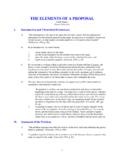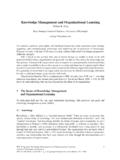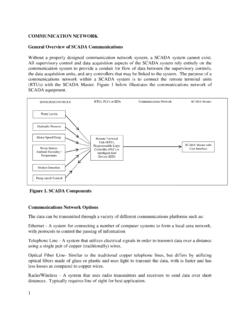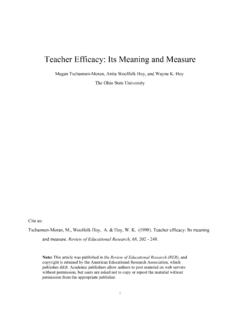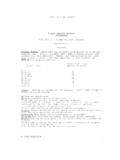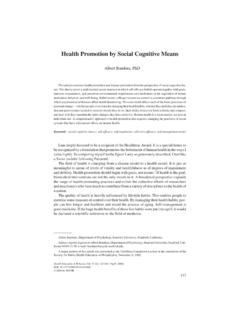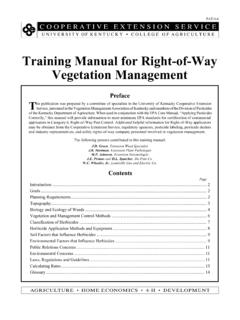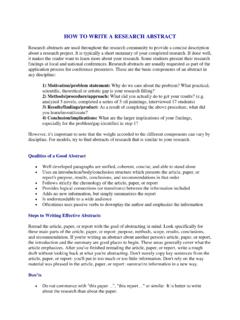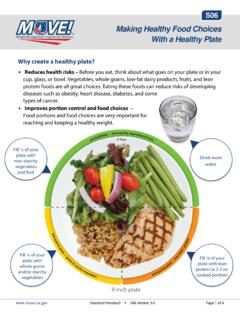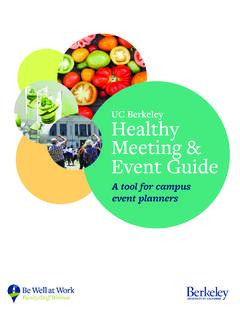Transcription of How to Create Healthy Boundaries - University of Kentucky
1 How to Create Healthy Boundaries An intimate relationship is one in which neither party silences, sacrifices, or betrays the self and each party expresses strength and vulnerability, weakness and competence in a balanced way. ~Harriet Lerner Setting Boundaries is essential if we want to be both physically and emotionally Healthy . Creating Healthy Boundaries is empowering. By recognizing the need to set and enforce limits, you protect your self- esteem, maintain self-respect, and enjoy Healthy relationships. Unhealthy Boundaries cause emotional pain that can lead to dependency, depression, anxiety, and even stress-induced physical illness.
2 A lack of Boundaries is like leaving the door to your home unlocked: anyone, including unwelcome guests, can enter at will. On the other hand, having too rigid Boundaries can lead to isolation, like living in a locked-up castle surrounded by a mote. No one can get in, and you can't get out. What Are Boundaries ? Boundaries are guidelines, rules or limits that a person creates to identify for themselves what are reasonable, safe and permissible ways for other people to behave around them and how they will respond when someone steps outside those limits.
3 ( ). The easiest way to think about a boundary is a property line. We have all seen No Trespassing signs, which send a clear message that if you violate that boundary, there will be a consequence. This type of boundary is easy to picture and understand because you can see the sign and the border it protects. Personal Boundaries can be harder to define because the lines are invisible, can change, and are unique to each individual. Personal Boundaries , just like the No Trespassing sign, define where you end and others begin and are determined by the amount of physical and emotional space you allow between yourself and others.
4 Personal Boundaries help you decide what types of communication, behavior, and interaction are acceptable. Why is it important to set Boundaries ? To practice self-care and self-respect To communicate your needs in a relationship To make time and space for positive interactions To set limits in a relationship in a way that is Healthy Physical Boundaries Physical Boundaries provide a barrier between you and an intruding force, like a Band-Aid protects a wound from bacteria. Physical Boundaries include your body, sense of personal space, sexual orientation, and privacy.
5 These Boundaries are expressed through clothing, shelter, noise tolerance, verbal instruction, and body language. An example of physical boundary violation: a close talker. Your immediate and automatic reaction is to step back in order to reset your personal space. By doing this, you send a non-verbal message that when this person stands so close you feel an invasion of your personal space. If the person continues to move closer, you might verbally protect your boundary by telling him/her to stop crowding you. Other examples of physical boundary invasions are: Inappropriate touching, such as unwanted sexual advances.
6 Looking through others' personal files and emails. Not allowing others their personal space. ( , barging into your boss's office without knocking). Emotional and Intellectual Boundaries These Boundaries protect your sense of self-esteem and ability to separate your feelings from others'. When you have weak emotional Boundaries , it's like getting caught in the midst of a hurricane with no protection. You expose yourself to being greatly affected by others' words, thoughts, and actions and end up feeling bruised, wounded, and battered. These include beliefs, behaviors, choices, sense of responsibility, and your ability to be intimate with others.
7 Examples of emotional and intellectual boundary invasions are: Not knowing how to separate your feelings from your partner's and allowing his/her mood to dictate your level of happiness or sadness ( codependency). Sacrificing your plans, dreams, and goals in order to please others. Not taking responsibility for yourself and blaming others for your problems. Barriers to Boundary Setting It seems obvious that no one would want his/her Boundaries violated. So why do we allow it? Why do we NOT enforce or uphold our Boundaries ? FEAR of rejection and, ultimately, abandonment.
8 FEAR of confrontation. GUILT. We were not taught Healthy Boundaries . Safety Concerns If you are dealing with someone who is physically dangerous or threatening to you, it may not be safe to attempt to set explicit Boundaries with them. If you are in this situation, it can be helpful to work with a counselor, therapist or advocate to Create a safety plan and boundary setting may be a part of this. Assess the current state of your Boundaries Healthy Boundaries allow you to: Have high self-esteem and self-respect. Share personal information gradually, in a mutually sharing and trusting relationship.
9 Protect physical and emotional space from intrusion. Have an equal partnership where responsibility and power are shared. Be assertive. Confidently and truthfully say yes or no and be okay when others say no to you. Separate your needs, thoughts, feelings, and desires from others. Recognize that your Boundaries and needs are different from others. Empower yourself to make Healthy choices and take responsibility for yourself. UNHEALTHY Boundaries are characterized by: Sharing too much too soon or, at the other end of the spectrum, closing yourself off and not expressing your need and wants.
10 Feeling responsible for others' happiness. Inability to say no for fear of rejection or abandonment. Weak sense of your own identity. You base how you feel about yourself on how others treat you. Disempowerment. You allow others to make decisions for you; consequently, you feel powerless and do not take responsibility for your own life. Tips for Setting Healthy Boundaries (Modified from the book, Boundaries : Where You End and I Begin by Anne Katherine). When you identify the need to set a boundary, do it clearly, calmly, firmly, respectfully, and in as few words as possible.

